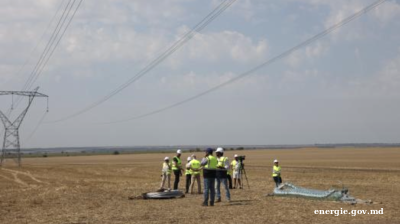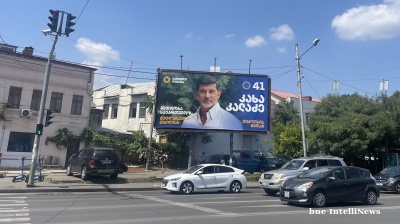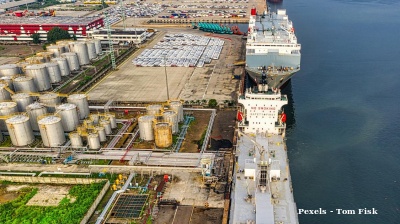Ukraine’s early advantage in battlefield drone technology is eroding as Russian investment, industrial scaling and technological innovation reshape the aerial landscape of the conflict, particularly in the deployment of fibre-optic guided unmanned systems.
“Although the Ukrainians still produce more FPVs, Russian jamming systems have evolved considerably, limiting the use of FPVs without optical fibre,” Russia watcher Patricia Marins noted in a social media post.
Since the drone war scaled up in around 2023, Russia and Ukraine have been locked in a technological arms race and both have invested heavily in massively expanding their production of drones. Both are expected to make some 2mn drone this year alone that have saturated the battlefield.
Russia is ramping up arms production, now making up to 5,000 Geran-type drones monthly, according to a Radio Svoboda investigation. It also produces 200–250 missiles per month – Iskander, Kinzhal, Kalibr, Kh-101, Oniks, Zircon and more – amounting to up to 3,000 annually.
In 2025, Russia also plans to assemble 1,500 tanks, mostly upgraded Soviet models, with only about 280 being modern T-90Ms. Work is also underway on Tu-160 bomber upgrades and Su-57 fighter production, though none have been officially fielded yet.
Optical fibre drones made their debut as part of Russia’s efforts to expel Ukraine’s forces from the Russian Kursk region last year. The spools of hair-like cable give them enough range that Russia can threaten Ukraine´s forces and logistics 25 kilometres behind the front line. Russia has more of the fibre-optic drones than Ukraine, giving them an advantage, Roman Pohorilyi, the founder of Ukrainian open-source research group DeepState told Reuters.
Drones are now playing the most important role on the battlefield. The use of optical fibre that makes electronic warfare (EW) measures redundant, was a Russian innovation, but was quickly copied by Ukraine. Initially slow to invest in optical fibre, and with decentralized production and higher costs, Ukraine has been catching up. However, the main technological challenge the Armed Forces of Ukraine (AFU) is facing is the quality of the optical fibre coils which can contain up to 15km of gossamer thin fibres that have a habit of breaking, resulting in a 30% success rate for Ukrainian optical fibre drones, according to Marins.
The expansion of Russia’s industrial base has gone better. During the battle for Kursk, Russian manufacturer Ushkuynik reportedly produced approximately 500 units per month of its Prince Vandal fibre-optic drone. “Today, that number is in the range of 40-60 thousand per month, and three more factories are under construction,” says Marins. Ushkuynik is also franchising production to other Russian firms.
Beyond sheer volume, Russian drone technology is advancing in lethality and resistance.
“The Russians have invested in tungsten warheads, modern navigation systems, and modern anti-jamming technology in their drones, including the German-2, which render the SHARED-136 museum pieces,” Marins adds. Ukraine’s countermeasures, including more than 300 self-propelled anti-drone systems, are reportedly ineffective against the latest Russian models.
The quality gap is attributed in part to insufficient external support. “Much of this is due to financial neglect from allies, marking the beginning of the Ukrainian decline in this field and potentially compromising the entire battlefront,” Marins reports.
Looking beyond the war, Russia is positioning itself to become a dominant player in the global drone market. The current production of long-range ISR and kamikaze drones at 60,000-80,000 units annually, with forecasts reaching 300,000-400,000 units in the next 5-6 years.
“The major clients will be smaller nations, which will possess drones capable of striking targets thousands of kilometres away, changing the regional geopolitical correlation,” Marins concluded.
Ukraine is also looking to export drones which could earn as much as $20bn a year, if the current export restrictions are lifted. Separately, Ukrainian President Volodymyr Zelenskiy has offered the Trump administration a mega drones-for-weapons deal worth $20-$30bn where he proposes Ukraine will swap its advanced drone technology for powerful US-made weapons.
Features

World GDP forecasts raised, but US slowdown anticipated - Fitch
Global growth is now forecast to be 2.4% in 2025, up 0.2pp since June but a sizeable slowdown from 2.9% last year and below trend.

Moldova’s dramatic energy sector transformation
Chisinau ended decades of dependence on Russia in just four years — but will the upcoming general election derail the remaining reforms?

Local elections loom in Georgia
Georgia’s October 4 municipal elections are already mired in controversy amid a partial opposition boycott and mounting state repression, as major international observers refuse to participate.

Iran's nuclear materials 'Under rubble of attacks', Foreign Minister claims
Iran's Araghchi says that the only nuclear site currently accessible is the Russian-controlled Bushehr nuclear power plant in his meeting with the IAEA.



